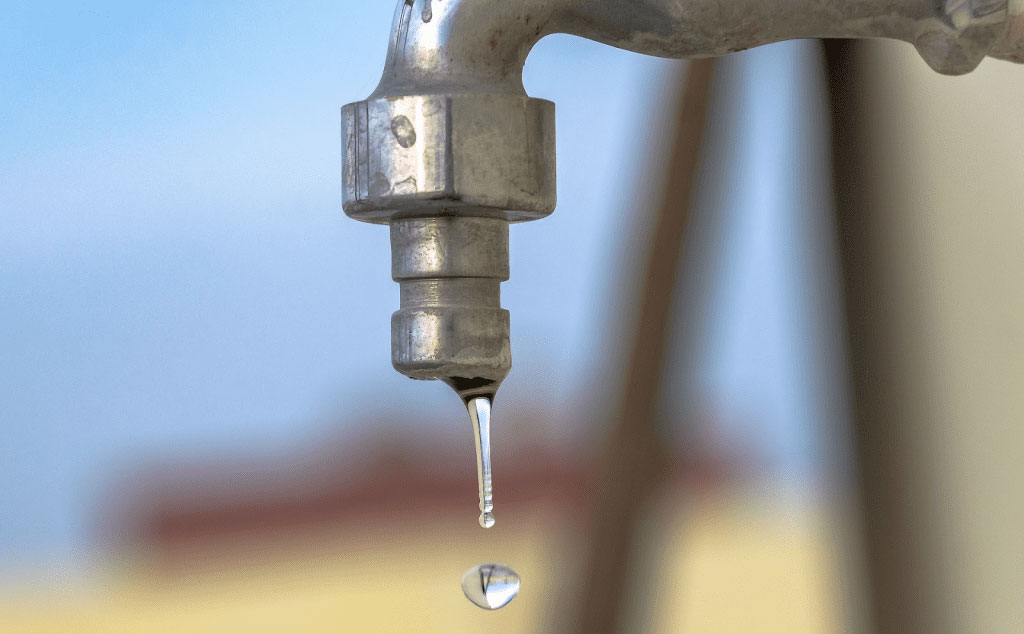Did you know that about 1.2 billion people in the world do not have access to clean drinking water? Water is a limited resource that is often taken for granted. Small water-saving practices can make a huge difference in overall water consumption. We need to Know the ways to conserve water as much as possible.
Why Should We Save Water?
Water is a part of our daily life. Here are some basic reasons why we need to save water:
- Water is a limited resource
- It is the right thing to do
- Food can’t grow without water
- Wastewater affects the environment
- There is no survival without water
- Conserving water saves you money and energy
- Saving water prevents groundwater depletion
How to Save Water
Water Conservation Methods in Home:
Saving water at home doesn’t cost you much. There are many things you can do in your own home to reduce water waste. Here are household water conservation tips for you to follow:
1. Fix leaks and drips:
A small leak in your toilet or a faucet could become the reason for losing hundreds of gallons of water a day. If you see leaks and drips, fix them as quickly as possible to avoid wasting water. Every now and then do a thorough check for leaks and replace the inside parts of your toilet every year. Fixing leaks and drips is important to reduce your water footprint.
2. Don’t use the toilet as an ashtray or trash can:
Don’t throw tissues or cigarette buds in the toilet and flush them, instead toss them in the dustbin. You should know that each flush consumes 5 to 7 gallons of water, so you will be able to conserve a lot of water by avoiding these habits.
3. Put a plastic bottle in your toilet tank:
You can use a toilet dam or bag. Another alternative is filling a plastic bottle with rocks and water, and placing it in the toilet tank. When you place the bottle in the toilet tank, less, less water will be used to fill the tank and consequently less water will be flushed. These methods are not compatible with new low-volume flush toilets.
4. Check your toilet for leaks:
Put food coloring in your toilet tank. If, without flushing, the coloring begins to appear in the bowl, you have a leak. You might have been wasting 100 gallons of water per day.
5. Take shorter showers:
You can conserve about 5 gallons of water a minute by shortening your showers. Another easy way to conserve water is to turn off the shower while soaping up and turning it back on when needed. You will use less water if you take shorter showers.
6. Install low-flow faucets and shower heads:
You can save a lot of money and water by purchasing and using low-flow faucets and shower heads. Installing such an efficient gadget is the smartest choice possible.
7. Use a shower bucket:
You can place a shower bucket in the shower to collect clean water whilst you shower. After the shower, you can dump the water somewhere useful, for instance, your garden.
8. Turn off taps while brushing, shaving, washing hair, or hands:
A running faucet can waste more than 6 litres of water a minute. If you simply turn the water off as you brush your teeth, you can save a lot of water daily. Turn the faucet off after you wet your toothbrush, and leave it off until it is time to rinse. While shaving, instead of letting the faucet run, you can fill the lavatory basin with water. When washing your hands, turn on the water only after you’re done with your lather and ready for your rinse.
9. Check faucets and pipes for leaks:
Every now and then do a thorough check for leaks and drips. Replace the faulty faucets with water-saving faucets.
10. Fit household faucets with aerators:
To avoid water wastage, you can replace old and inefficient faucets with new water-saving aerators. They can save up to 700 gallons of water per year.
11. Insulate water pipes:
By wrapping your water tank and insulating the connecting pipes, you can save a lot of water in the long run. Energy consumption is also reduced by insulating water pipes because hot water does not lose its heat and the hot water tank is not used so much.
12. Don’t let the water run while you clean fruits and vegetables:
Running the water over fruits and vegetables, wash them in a pot of water instead. You can also collect the water you used to rinse your fruits and vegetables and use it to water the plants. If you have two sinks, fill one with rinse water.
13. Prefer Dishwasher:
Use your dishwasher instead of washing dishes with your hands because a dishwasher consumes a lot less water than washing by hand. Run your dishwasher on full loads.
14. Washing dishes by hand:
When washing dishes by hand, don’t let the water run for rinsing. We can save the excessive water we use by letting the water run.
15. Use a spray device:
If you have a double bowl sink, fill one with soapy water and one with rinse water. If you have a single bowl sink, gather washed dishes in a dish rack and rinse them with a spray device. Dual-swivel aerators can also make this easier.
16. Install a water heater in the kitchen:
Install an instant water heater close to your kitchen sink. This way you don’t have to run the water while it heats up. This will result in far less waste of water.
17. Don’t use water to de-thaw frozen foods:
Don’t use running water when you are trying to unfreeze meat or other frozen foods. This practice helps you to conserve gallons of water in the kitchen.
18. Don’t waste ice cubes:
If you accidentally drop ice cubes, don’t dump them in the sink. Put them in a plant instead.
19. Never pour water down the drain:
Never pour water down the drain when there may be another use for it. Like watering a plant or lawn.
20. Store drinking water in the fridge:
Keep a pitcher of drinking water in the refrigerator instead of running the tap water. In this way, you have a supply of water without running a faucet.
21. Do your laundry full-loads:
Washing a full load of laundry is the most effective way to save water. You can wait until the washing machine is full before starting, and you can conserve up to 20 gallons of water per wash. Always use the proper water level or load size.
22. Use concentrated detergents:
You can use concentrated detergents instead of normal ones. This may save more water.
23. Use a water-efficient washing machine:
Start saving water and energy. Do your research on the appliances that use water. Look for a water-efficient front-loading washing machine and use it to conserve gallons of water every time you do your laundry. For example, Energy Star.
24. Use cold water in the washing machine:
Set your washing machine to use cold water rather than hot water. This can save you money on your energy bills.
25. Collect and reuse water for plants:
Collecting and reusing water is undoubtedly the best way to conserve water. You should collect water and dump it into a useful place, like a garden.
26. Water companies:
Many local water companies provide free stuff for leakages. Like cistern displacement devices or leak strips. You can reduce water loss at home.
Water Conservation Methods Outside Home:
Here are some tips to reduce water use outside the home:
27. Water your plants during cooler hours:
You should water outdoor plants in the morning or late evening. During these hours, less amount of water will be lost from evaporation because of colder temperatures.
28. Position your sprinklers correctly:
Position your sprinklers so that water lands on your lawn or garden, not in irrelevant areas.
29. Use a watering can rather than a hose:
Rather than using a hose or sprinkler to water your plants, use a watering can to water the lawn. This can save you gallons or more of water. You can reduce the amount of water waste by watering your lawn or garden with a can.
30. Add organic matter to your lawn:
To increase the absorption and water retention of soil, add organic materials. Mulch around the plants to keep the soil cool, reduce evaporation, support growth, and avoid weeds.
31. Reroute grey water to the plants and trees:
To make the grey water useful, get help from your plumber to reroute the grey water to the plants and trees.
32. Use a bucket instead of a hose to wash your car:
Take your car to the car wash that recycles the water. If you are washing it at home, use a bucket instead of a hose. This can reduce the amount of water used.
33. Install rain barrels to collect water for outdoor tasks:
Install a rain barrel or water butt outside. Collect rainwater to water your indoor plants or wash your car. This can add up to some significant water savings.
34. Cover swimming pools to decrease evaporation:
Swimming pools can lose a lot of water to evaporation. To conserve thousands of gallons of pool water, get a cover for your pool.
35. Check for Leaks in Pipes, Hoses, Faucets, and Joints:
Check your garden hose and irrigation system for leaks and drips. Inspect hose joints to make sure rubber washers are in place.
36. Don’t use a hose to clean steps, driveways, and sidewalks:
Use a broom to clean steps, driveways, decks, porches, and sidewalks rather than hosing them off.
37. Wash your pet in the area of the garden that needs watering:
When you are washing your pet, a lot of water is being wasted. To conserve water, you can wash your pet in an area of your lawn that needs watering.
38. Teach your children water-saving tips and reward them for the following:
You can teach your kids the importance of saving water. Train them to follow the water-saving tips and appreciate them with rewards.
39. Support projects that use recovered wastewater for irrigation and industrial uses:
You can support water conservation projects by volunteering and spreading awareness about worldwide water scarcity.
40. Track your water usage:
Monitor your water bill and water meter to avoid high usage of water.
Final Thoughts:
With each passing year, Freshwater is becoming more of a scarce resource. Population increase has caused a rise in water demand, while severe droughts have limited its supply. We need to minimize water waste to survive, grow food, and preserve the Earth. If we all save precious water supplies, we can make a huge difference.
Read Now: The Most Accurate Ways To Test Water Quality
Michael C Vang is a passionate blogger. He has been blogging since 2013 on a variety of topics. He is committed to creating informative and engaging content that helps readers learn more about everything.



